Text
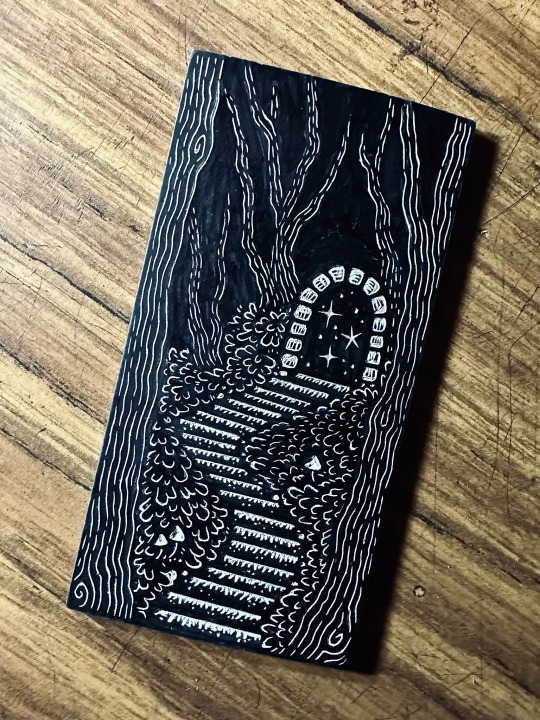
first carve in the new studio space, a tiny 2”x4” block.
tread lightly in these woods.
#printmaker#linoprint#printmaking#block printing#relief print#salted snail studio#reliefprint#block print#portals#linocut relief prints#linocut
49 notes
·
View notes
Text
heads up y’all: my online shops are gonna be closed for March while I move 2,000 miles across the country to Massachusetts. I’ll try and get things back up and running in early April…… but likely won’t actually be fully functional until mid to late April….. so if there’s anything you’ve had your eye on, snag it while you can….. and thank you for funding my road snacks.
14 notes
·
View notes
Text

a few linocuts from this past year
#man do I love lokta and kitakata huh#they’re just so nice to print on#and I love a warm creamy white paper#linoprint#printmaker#printmaking#block printing#relief print#salted snail studio#reliefprint#block print#kitakata paper#lokta paper#linocut#Linocut printmaking#Linocut prints#relief printmaking
151 notes
·
View notes
Text

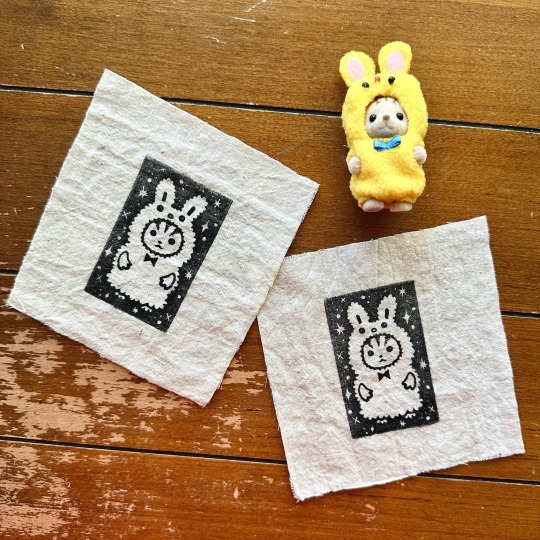
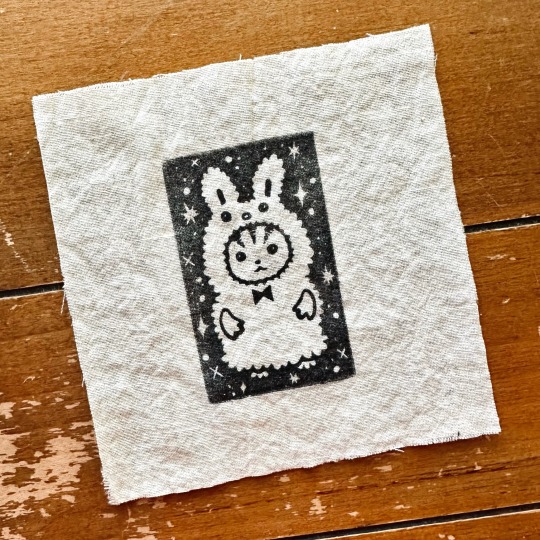
“critter” patch
linocut print on fabric
#linoprint#printmaker#printmaking#block printing#relief print#salted snail studio#reliefprint#block print#linocut fabric#linocut#linocut patch#calico critters#calico critter
83 notes
·
View notes
Text

soup
linocut print on a vintage doily
#this bad boy and a few other doilies are in the shop now#soup#linoprint#printmaker#printmaking#block printing#relief print#salted snail studio#reliefprint#block print#vintage doily#doilies#linocut#linocut printed fabric#linocut print
37 notes
·
View notes
Text

all bundled up ☕️
linocut print on mulberry paper
#linoprint#printmaker#printmaking#block printing#relief print#salted snail studio#reliefprint#block print#linocut#relief printmaking#bear#teddy bear
21 notes
·
View notes
Text

carved this tiny block surrounded by dear friends with a belly full of minestrone
linocut print on lokta paper
#I’ll have these in the shop soon#linoprint#printmaker#printmaking#block printing#relief print#salted snail studio#reliefprint#block print#relief printmaking#linocut#linocut print
77 notes
·
View notes
Note
Also I want to print a shirt where a jellyfish wraps around from front to side to back, i.e. I can't print the whole thing at once if the t-shirt is laid flat. Any advice? I feel like I'm not consistent enough with rolling on ink and hand-pulling fabric prints to split the block and do it in two different sittings but maybe that's the only way? Thank you!!
So first of all that design sounds fucking killer and I absolutely want to see it.
I feel like it depends on how wide the block is, whether or not you’ll be able to print it how you want to without having to split it. Could you fold the t shirt in such a way that, instead of the front being “up”, the side was? With the armhole in the middle/up? If the block is wider than the t shirt lying flat like that, I can’t really think of any better way to print it than to split it and try and do it in two consecutive printings, sorry! 😭
7 notes
·
View notes
Note
Hi! I was wondering for printing on fabric bc you have to use more ink, but also in general, how do you get the paint to not like squish over the edge of your relief and fill in the tiniest crevices?
Hey! So it’s sort of a balancing act: if your ink is squishing over the edges of your block, you’re over-inking or applying too much ink too quickly…. And honestly you may have to over ink to compensate for other factors like not being able to apply enough pressure when printing or that particular fabric not being well suited for being easily printed upon. You kinda gotta choose your demons. But yeah, if ink is getting into the carved sections of your block, try applying thinner layers and using less ink. You want the surface of the ink to be sort of velvety - not quite orange-skin-y …. if that makes sense.
I really think using a lever press is a huge advantage for me here because I’m able to more easily apply really intense, even pressure across the block while printing. I’d say try and find a way to apply more pressure when printing if you can!! And don’t shy away from the chatter and noise and imperfections of hand printed clothing because it honestly gives it soooo much more character.
8 notes
·
View notes
Text

cloud castle
linocut print on mulberry paper
#printmaker#linoprint#block printing#printmaking#relief print#salted snail studio#reliefprint#block print#linocut#Linocut printmaking#Linocut print
128 notes
·
View notes
Note
Hi! I just found your page, love your work! I do a bit of lino printing and really enjoy it. I want to start printing on fabric but not sure how to transition.. What inks do I need, do I need to start using wood blocks, and how do I go about that, etc?
Any info or tips would be so appreciated :)
Hey, thanks!
Absolutely I can offer some tips for fabric printing! I also answered an ask about fabric printing a while back and there might be some info in there that you’ll find useful - https://www.tumblr.com/saltedsnailstudio/729384076745850882/how-do-you-print-your-linocuts-so-beautifully-on
So first off I would say don’t bother switching to wood for fabric printing. Linoleum does great! And, honestly, so does rubber. I don’t personally work with rubber/ez-cut style blocks often because I prefer unmounted battle ship grey lino, but it has been my experience that soft rubber blocks are easier to print onto fabric if you’re printing by hand. I recommend sticking with whatever blocks you like & are comfortable working with!
Since you asked about ink specifically: There’s a lot of different inks on the market you can use to make relief prints on fabric that’ll stand up to washing. Speedball has an ink made for fabric printing that some of my print friends swear by, but I personally despise it because I hate the texture of it and find it difficult to work with because it doesn’t have a very long open time. I use cranfield caligo safe wash relief inks for all my printing, both paper and fabric. I love the way it rolls out and it’s works really well for me because it’s oil based but it's water soluble before it dries, so it doesn't require wild solvents or anything to clean up like some other oil based inks do - just vegetable oil and a rag will do to get it off stuff. (careful using vegetable oil on the speedball beige/tan brayers, though, because it'll start to break down their material and make them go tacky if you dont adquately wash them and apply some cornstarch after!!) After the cranfield ink dries, it's no longer water soluble so it'll stay on fabric after washing. Keep in mind though that oil inks take ages to dry - I just hang my fabric prints up and leave them alone for a good two weeks, which might be overkill. When they're dry, I hit them with a hot clothes iron to help heat set them a bit before I wash them in cold water. I don't know if this actually does anything or is the placebo effect, but it really feels like I get less fading with fabric prints that I've heat set. You don't have to use the same ink I do, though I love it so much that I'll prostheletize it for ages, but make sure you do use an ink that's suitable for fabric printing because theres no heartbreak worse than putting all that work in only to watch it wash away.
In my experience, you'll need more ink on your block for printing on fabric than you would if you were printing on thin printmaking papers. You still don't want to just gob it on the block in one go - apply many thin layers to build up the ink on the block rather than trying to go in with a single thick layer.
Now that ink's handled, let's talk about the most important element of fabric printing: the fabric. A lot of folks have ratios of how much natural fibers vs synthetic whatever should be in the fabric you're choosing for relief printing. I'm sure those methods work for choosing good printing fabric, but I'm at a point of having failed enough times to know by look & touch if a fabric will probably work well or not. I really suggest just trying shit out, seeing if it works. I'm lucky enough to have a creative reuse center near me, but if you don't then I suggest snagging garments with fabric you like from thrift stores and cutting them apart if you're trying to make patches. You're looking for something with a nice smooth surface and a closed weave, no gaps showing through the threads. I really like tightly woven linen-y blends, personally. I've also played around on wool felt and have found it to print beautifully. When I first started printing on fabric, I went to the fabric store and got a half yard of duck canvas because that felt sturdy and very "punk" for patches. It was a miserable failure - the weave was too chunky to get really clean prints. Play around, don't spend too much money on fabric, and know that screwing up is a part of the process.
When it comes to actual printing method, I'm limited in my scope of advice for hand printing on fabric because I'm very spoiled and have a lever press from woodzilla that makes the process a lot easier for me. I'm not sure how you burnish your paper prints, but the spoon technique won't work with fabric since it'll move too much. I like to print my paper prints with the paper on top of the block and I reverse that for my fabric prints - the block lies face down on top of the fabric. I've seen folks get great results from laying down their fabric, laying their inked block on top, and then stepping on them to get more pressure than they could get from just pressing with their hands. You need a lot of pressure to get clean fabric prints and that pressure needs to go straight down - you need to be extra careful not to let the block slip, lest it smudge the image. You could try laying a wooden board down on the block before stepping on that if the print is large enough to require it. I've also seen some really ingenious ways of creating book binding/flower pressing style wooden vices on a budget to get the even pressure needed for a print, but this feels rather labor intensive and time consuming to me. Whatever the method, be patient and apply firm downward pressure.
Screw up, rejoice, have fun. If you end up needing any help trouble shooting specific problems as you experiment on fabric, feel free to send me another ask/pics and I'll try to help sus it out!!
23 notes
·
View notes
Note
Hello! I love your artwork! ♡ I was wondering if you'll be selling tshirts any time soon? I feel like I remember you having them before, but if I'm wrong then please ignore. Thanks!
Hey, thanks!
I did have several garments for sale at local markets this past holiday season. I still have a few pieces left (a few t shirts, a dress, a jump suit) that I might make available via a story sale over on Instagram soon if I don’t just end up listing them on my website.
I do intend to hand print more tees & other thrifted garments in the future!! Also have been looking at digitizing some of my prints to sell t shirts through a print on demand service 👀
3 notes
·
View notes
Text

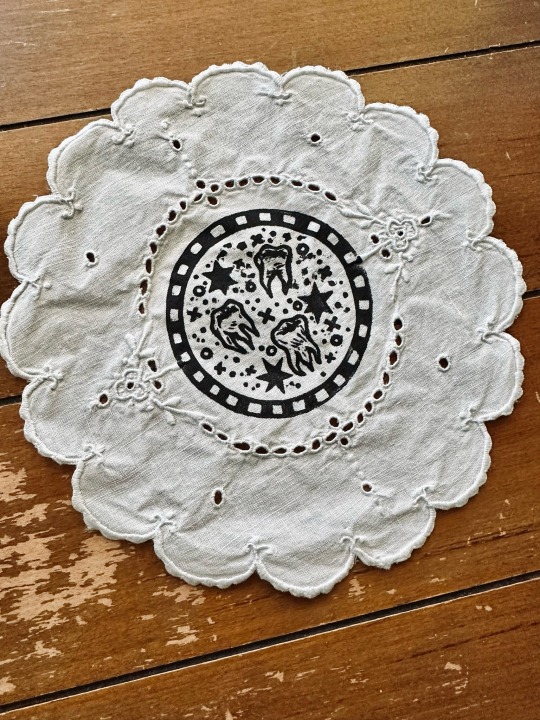
linocut prints on vintage doilies
#I got a bunch of doilies and handkercheifs from the local creative reuse store and they’ve been wicked fun to print old blocks on#printmaker#linoprint#block printing#printmaking#relief print#salted snail studio#reliefprint#lace doily#vintage textiles#creative reuse#linocut#linocut fabric#relief printed fabric#textile art
211 notes
·
View notes
Text

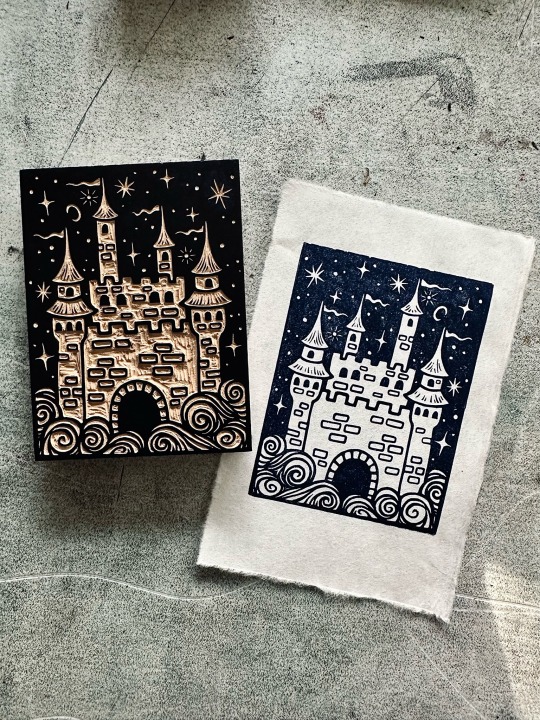
pulled some test prints of this new lil block
#not 100% happy with it but such is the nature of making stuff#I am pleased with the fact that you cannot tell where I screwed up and had to patch the hole with wood filler#I don’t usually use speedball lino or mounted lino but over all enjoyed working with it this time!!#it carved a bit easier/softer than my usual battle ship grey lino#printmaker#linoprint#block printing#printmaking#relief print#salted snail studio#block print#reliefprint#handmade#linocut printing#linocut#Linocut printmaking
987 notes
·
View notes
Text
Hey y’all, I’m currently hard at work on a (pretty broad and somewhat comprehensive) linocut zine that I’m gonna make available as PDFs for free once it’s all out of my head and onto the page. It’ll detail a lot of my personal processes, give a really foundational knowledge of materials/tools, and hopefully just generally be a useful resource for folks looking to get into linocut….. also, it’s very obviously an excuse for me to infodump about something that is basically always consuming at least 60% of my brain.
Just wanted to pop over here to remind y’all that my asks are always open and if you have any questions about my process (or about linocut more generally), please feel free to shoot me an ask. You don’t gotta feel weird about it or like you’re bothering me or whatever. I treat nothing as proprietary, fucking looooove talking about printmaking, and am finding answering questions to be really useful to me as I attempt to outline what needs to go in this zine. I also have a Q&A stories highlight over on Instagram if that’s easier for ya.
Thanks for reading! Big love, happy carving.
#printmaker#linoprint#linocut zine#block printing#printmaking#relief print#salted snail studio#reliefprint#linoleum carving#linocut#linocut printing#linocut print#linoleum print#linoleum printmaking#linocut reference
41 notes
·
View notes
Text

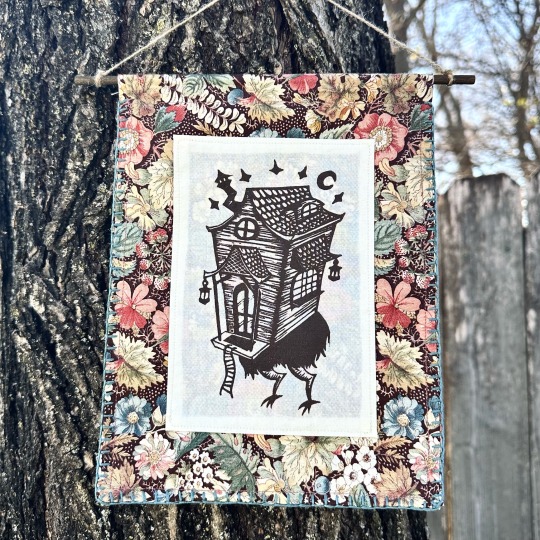
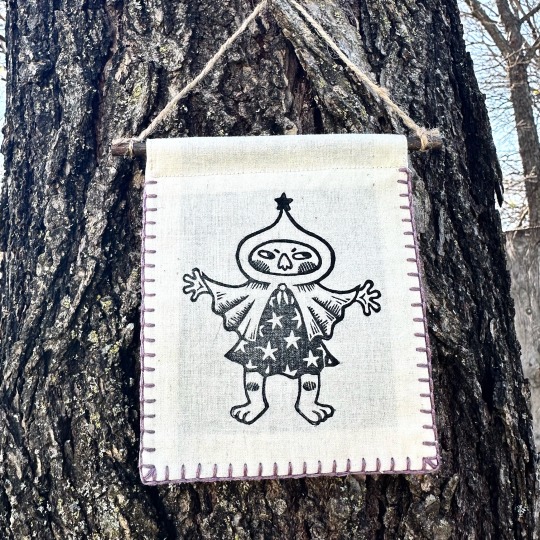

linocut banners & bunting
hand printed & home sewn using recycled textiles
poppin’ these bad boys onto the website today - shop reopens at noon cst 1/1
#printmaker#linoprint#block printing#printmaking#relief print#salted snail studio#block print#reliefprint#blanket stitch#home sewn#linocut#linocut printed fabric#bunting#mixed media
78 notes
·
View notes
Text

This tiny wizard’s name is Soup. He makes “soup” (potions of dubious efficacy) from junk he finds on the ground but his prices are honestly quite reasonable so nobody really minds much that his elixirs don’t work.
Linocut print on fabric, home sewn
#printmaker#linoprint#block printing#printmaking#relief print#salted snail studio#block print#reliefprint#handmade#blanket stitch#tiny wizard#creativereuse#linocut printed fabric#linocut#lino printing#linocut patches#linocut fabric#block printed fabric
129 notes
·
View notes